


The first Chusan
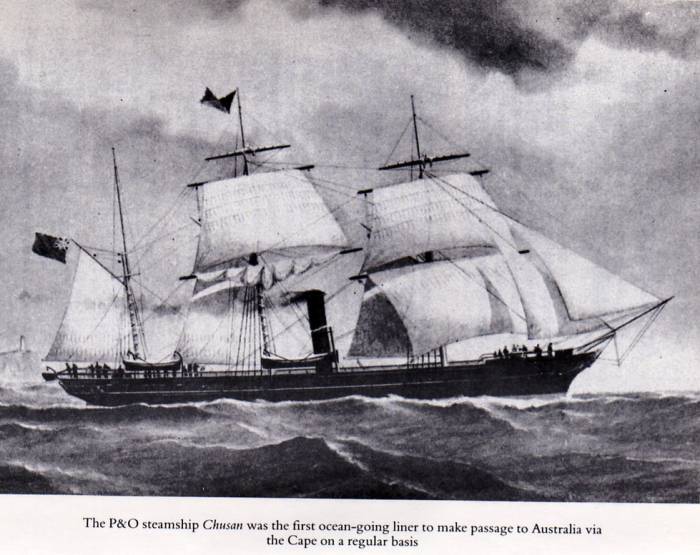
Under the command of Captain Henry Down RNR, Chusan was the first P. and O. steamship to operate a regular mail ship service between the United Kingdom and Australia, via Singapore. She was also only the second steamship to trade in Australian waters, the first being the paddle-wheeler Sophia Jane in 1831.
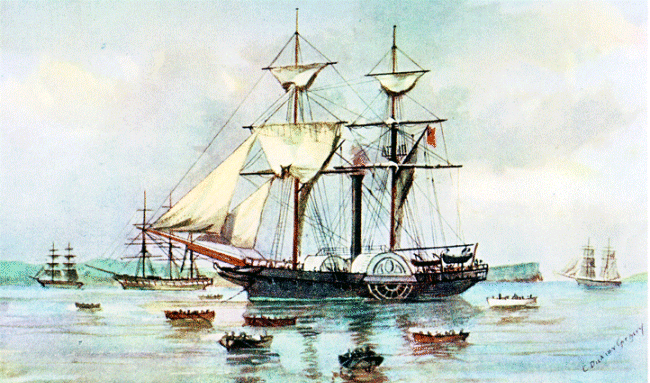
The Sophia Jane of 256 tons – The first steam powered ship to arrive in Australia, by Charles Dickson Gregory
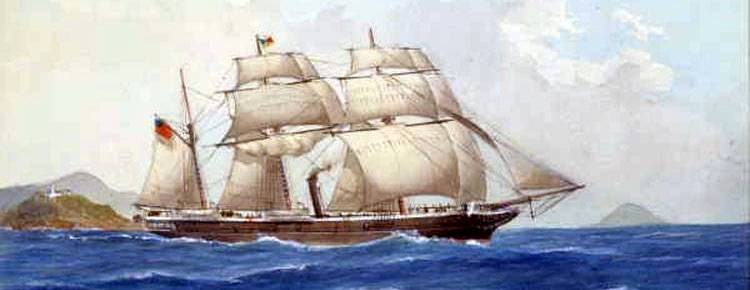
Built in 1848 by Miller, Ravenhill and Salkeld ,Low Walker, of Newcastle, England for the P. and O. S. N. Co, Chusan was a barque-rigged steamer of 699 gross tons, fitted with an 80 hp engine, capable, unassisted, of giving her a speed of 9 knots. With the aid or her sails, the vessel was claimed to be capable of 14 knots. For self defence, Chusan was armed with a 32 pounder naval cannon, mounted aft on a traversing carriage, that was able to train to port and starboard, together with an 18 pounder, also on a traversing carriage, mounted on the poop deck.

32-pounder cannon, mounted on a traversing carriage.
Four broadside Royal Navy pattern 12 pounders on the forecastle, and 6 swivel guns around the poop rail completed her armament. She was also equipped with steam hoses. This impressive firepower was for protection against the pirate junks and swift prahus which prowled the China and Java seas in the 1850's.
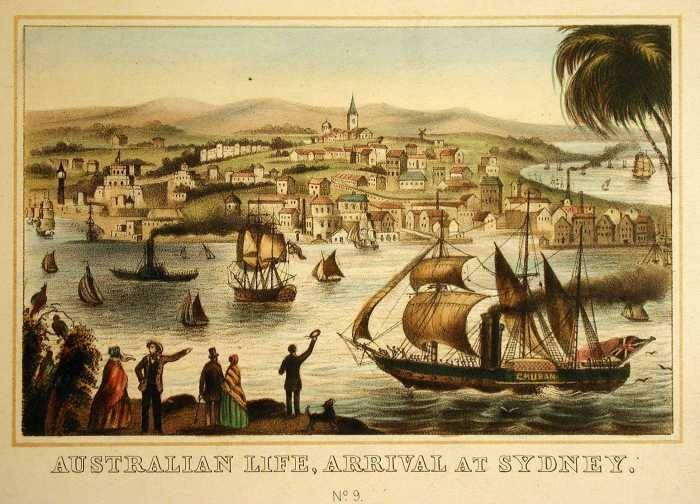
Chusan was the first ship to carry mail from the United Kingdom to Australia under contract to the Chancellor of the Exchequer. On the first inaugural voyage, she left Southampton on 15th May 1852 ,and arrived in Sydney on the 3rd August. Her arrival was greeted by large crowds at the dock, a subscription ball and supper was arranged, and a specially composed 'Chusan Waltz' marked the occasion in fine style.
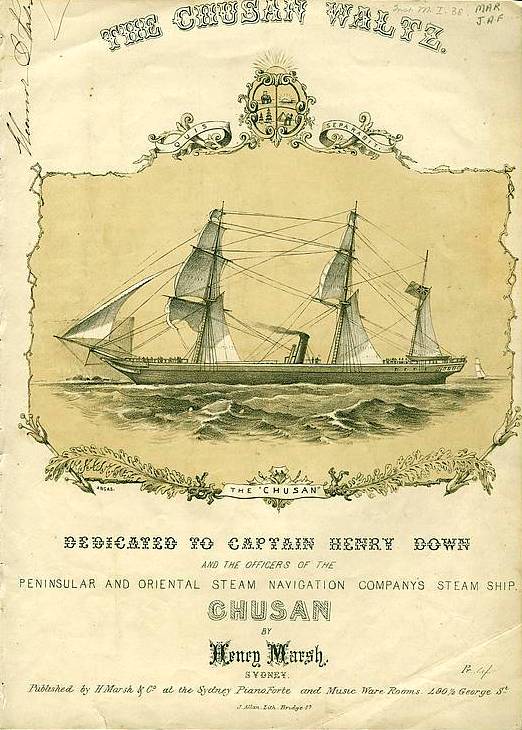
The voyage took 80
days, compared to the usual 121-130 days.
Chusan ended her P. & O. career in 1861 when she was sold to David Sassoon &
Sons of Shanghai, and sold on again, in 1866, to Feudatory of Matsuyama. She was
finally sold to Chosu Dan and renamed the Kayo Maru and converted into a
warship, before finally being broken up in 1870.

Chusan mail of 1852
The Eventful Life of the ss Chusan of 1884

At 4,636 gross registered tons, the 2nd Chusan measured 400 by 45 ft.
The second ship to bear the name, Chusan, was built by Caird & Co of Greenock. Sister ship to the Tasmania, Coromandel and Bengal, she was launched on 7th August 1884, entering Company service on 6th September on the India run, departing London on the 24th, bound for Calcutta. Designed for rapid conversion to an armed merchant cruiser or troopship if required, she was built without any Government subsidy, and had watertight doors with the mechanism well above the waterline. Smaller than contemporary ships, Chusan and Tasmania were fitted with inverted compound engines, where the more normal, vertical cylinder, is positioned upside down.
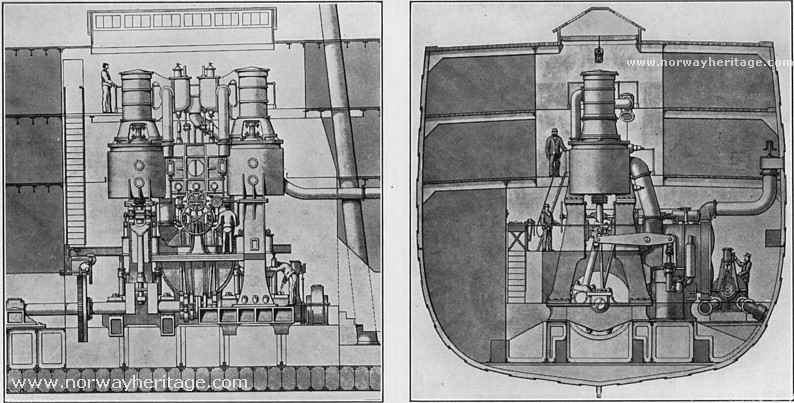
Typical 4-cylinder compound inverted engine with 48 and 83 in. diameter pistons, with a stroke of 60 ins. Each pair of cylinders could be used as an independent engine in case of breakdown
Chusan's passenger accommodation was comfortable, although less ornate than those of the vessels on the Australian run, though she had electric light throughout, and was a great favourite with the travelling public. With a service speed of 14 knots, she could carry up to 111 First Class and 42 Second Class passengers.
From the American, Mary Thorn Carpenter's Diary, of 1892
A great black ship lay at anchor off the curving shores of the Bay of Naples; and on the crowded wharf, among the coral venders, orange stalls, and idle sailors, were three Americans,
guarding numerous boxes and packages to be put on board the Indian steamer by the little tug, flying the Peninsular and Oriental colors — a square, checkered with blue, white, yellow,
and red — on her masts. On board the Chusan, the dimensions are more those of an immense yacht, half the size of our enormous Atlantic steamers, but for that matter much more agreeable,
having no throbbing motion of powerful machinery or the continual shiver of the screw. Her tonnage registers only 4,496, which we were surprised to find in a ship stanch enough to take us
through the Mediterranean, down the Red Sea, and over the Indian Ocean. A number of natives, Lascars, Hindus, and Mahometans line the ship's deck. All the sailors are Orientals, as well as
the stokers; and the rough work of the ship is done by Lascars, for English seamen would be utterly unfit for the climate we are coming to in a few days. The native sailors were in most summery
attire, wearing picturesque red turbans, with white trousers reaching scarcely to their bare brown knees, and sometimes a scant over-garment girdled about with gayly colored sashes. In the large
and well-lighted saloon below, the passengers were having four o'clock tea, and hugely enjoying themselves; but most of our fellow passengers had landed here to see Naples, and break the monotonous
journey from London. The smoking-rooms are large and airy, the decks are clean, with wide promenades reaching almost from stem to stern; and when we finally explore our cabin, and find it well lighted
by a big square port-hole, roomy and luxurious, with table, and even chairs, we begin to think our floating home for these next four weeks promises well, — and so it proves. Peninsular and Oriental
officers are a very steady, well-trained set of men; but with all the strict discipllne prevailing on board, the captain seems to run the ship for the pleasure of the passengers, forming with his officers
a self-appointed committee to provide endless amusements. The Anglo-Indians on board also join with real English zest in games of quoits, where you endeavor to throw rings of rope into buckets placed a
few yards apart on the deck. It requires skill and patience to succeed ; and then, if you like, there is the game of " Bull." Who that has been on a Peninsular and Oriental steamer ever forgets the excitement
of a ' Bull " tournament, in which half-a-dozen or more players strive to cover, in turn, one of ten numbers on an inclined board; no easy task when the ship is rolling and tossing about. A double canvas
stretches over our heads, and shades the sunny side of the deck. Under these awnings something is always going on, pleasant chats in quiet corners, music on the piano in the companion-way saloon, people
lying out in Eastern bamboo chairs reading, the staid English matrons quietly enjoying the serious business of a rubber at whist ; - so the days pass. The weather cleared up directly we left Naples; and
since then the sea has been very smooth, quite like the lazy Hudson in summer."

Note the ensign, flying upside down, indicating ship in distress.
In April 1887 she brought passengers from the Company's ss Tasmania home from Marseilles, after she was wrecked on the south coast of Corsica, with the loss of her captain and 34 passengers and crew.
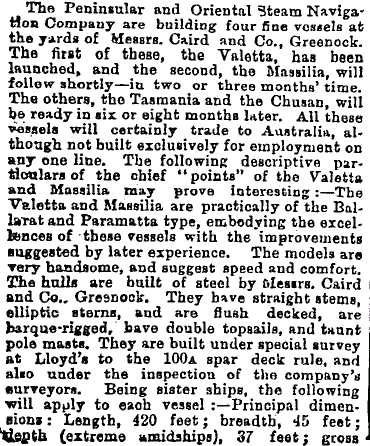
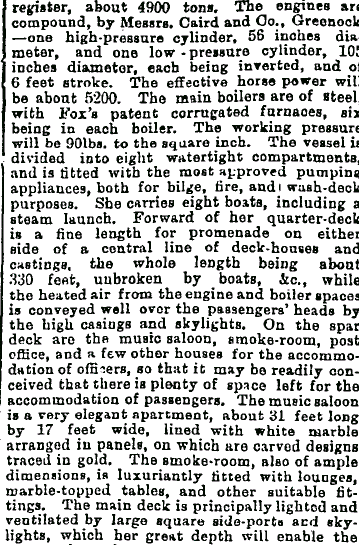
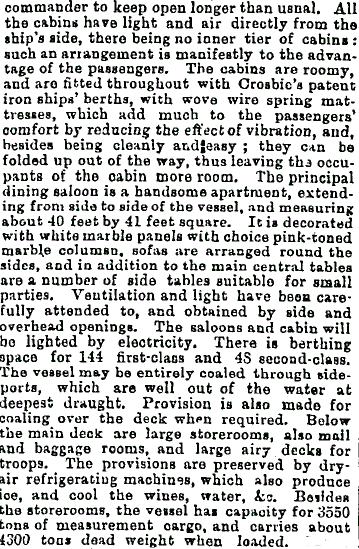
From the New Zealand Herald, Volume XXI, Issue 6915, 16 January 1884
On 28th January 1885, P&O's ss Chusan was stranded near Perim lighthouse but towed off by the Company's ss Thames at the second attempt.
On 30th September 1892, Chusan was rammed by an inbound Swedish steamer when leaving London's Royal Albert Dock. She returned to the dock for minor repairs, before sailing on 2nd October. On 25th July 1894, she salvaged the disabled sailing ship Falls Of Ettrick, a four-masted steel barque built in 1894 by Russel & Co, of Port Glasgow. towing her into the Hughli River, Calcutta. In 1902, Chusan was transferred to the Far East trade, before being sold to Indian owners in 1906 and renamed Shah Najaf, serving on the pilgrim run to Mecca. She was eventually broken up at Bombay in 1907.
Not to be confused with P&O's ss Chusan!
The China navigation Company's ss Chusan, en route to Shanghai, ran aground on 31st October 1932......between two rocks near Wei-Hai-Wei Island - at the time used as a British Naval Base in North East China.
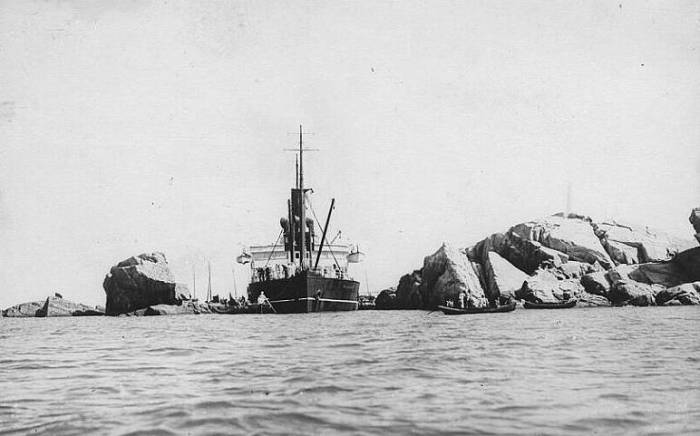
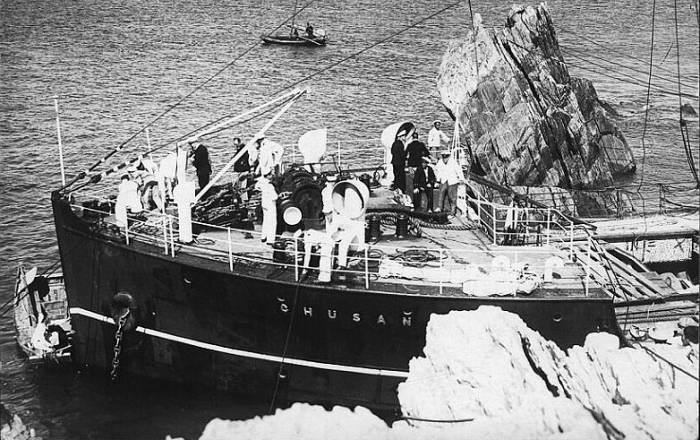
The Third Chusan

Ordered in May 1946, the third Chusan was a smaller version of the P&O Company's Himalaya and was designed as the principal element in the postwar regeneration of P&O's Indian and Far East service. Considered by many as a long overdue replacement for the celebrated Viceroy of India, sunk in November 1942 by the German U-boat U-407. Like her celebrated predecessor, she introduced superior standards, which were much appreciated by the good people of postwar austerity Britain, on the routes to the Orient and the Far East.
Chusan now has her own web page, with lots more info and photographs!
Please click the above link to navigate.